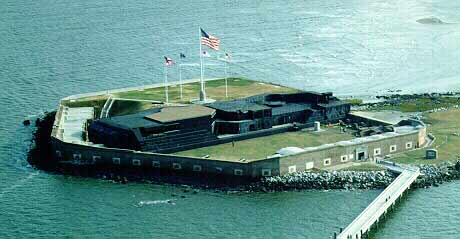
THOUGHTS ON THE PRESERVATION OF PLACE
- Whether I like it or not, whether I recognize it or not, what I am is in key part what I inherit.
- Anonymous
philosopher, quoted in Lowenthal, Possessed by the Past, p. 33.
- Memory and history both derive and gain emphasis from physical remains. Tangible survivals provide a vivid immediacy that helps to assure us there really was a past. Physical remains have their limitations as informants, to be sure; they are themselves mute, requiring interpretation; their continual but differential erosion and demolition skews the record; and their substantial survival conjures up a past more static than could have been the case. But however depleted by time and use, relics remain essential bridges between then and now. They confirm or deny what we think of it, symbolize or memorialize communal links over time, and provide archaeological metaphors that illumine the processes of history and memory.
- David
Lowenthal, The Past is a Foreign Country (1985), p.xxiii.
- Inexplicably, many preservation leaders seem to have lost sight of the motives which once fueled their movement and have become preoccupied with how preserve, either politically, economically, or technically, with little or no discrimination as to what they are preserving and why.
- William
H. Murtagh, Keeping Time: The History and Theory of Preservation in
America (1993), p. 167.
- For the historically evolved urban fabric offers a critically important life-support system to everyone who is sheltered there --whether temporarily as the tourist or permanently as the resident. This support is complex and multi-form. It is first of all supremely physical--indeed physiological. But it goes beyond that to offer psychic shelter as well. The city has been correctly defined as the theater of memory: that is, as the cumulative scene of past actions.
- James
Marston Fitch, Historic Preservation: Curatorial Management of the Built
World (1990), p. xi.
- Preservationists have argued that we must treat city centers as valuable artifacts. But unless they address the pressures that make it difficult or impossible to do so, their chances of success are not high. I am suggesting that if we enhance popular control over the production and distribution of goods, including housing, provide shelter for those who need it, and make resources available to want to fix up their own neighborhoods, people would be more than willing to honor collective memories. Only when citizens are not confronted with the choice between a preserved past and a squalid present can preservationism have a secure future.
- Michael
Wallace, "Reflections on the History of Historic Preservation,"
in Presenting the Past: Essays on History and the Public, ed. by Susan
Porter Bloom, Stephen Brier, and Roy Rosenzweig, (1986), p. 199.
- To preserve effectively, we must know for what the past is being retained and for whom. The management of change and the active use of remains for present and future purpose are preferable to an inflexible reverence for a sacrosanct past. The past must be chosen and changed, made in the present. Choosing a past helps us to construct a future.
- Kevin
Lynch, What Time is This Place?, (1972), p. 64.
- Right now, for instance, the question that we--scholars and citizens alike--are asking of our past is how we can develop a historical understanding that accommodates greatly expanded definitions of a multicultural society. That means we tend to look at a "George Washington" site, likely to have been developed in the late nineteenth century or first third of the twentieth century, wanting to know about the rest of the cast--women, blacks, soldiers, children--who may have been present as well. The next question is whether that particular site can shoulder the weight of our contemporary concerns. What historical ideas can we explore with fidelity to the site? How can we refer visitors to other sites of the same vintage that tell different portions of the story? How can we use the history of historic preservation and collections to explain still other parts of our story in visitor programs? All our sites and collections are partial in some sense. We can use that to good advantage.
- Jo
Blatti, Past Meets Present: Essays About Historic Interpretation and
Public Audiences (1987), p. 4.
- At their worst, they [historical museums] make evil in the past seem romantic and inequality in the present seem inevitable. At their best, museums [and historic sites] help people to understand the rifts that separate us from one another. The time has come to stop adjusting the furniture and begin reforming our essential presentations of the past.
- Edward
A. Chappell, "Social Responsibility and the American History Museum,"
Wintherthur Portfolio, 24 (Winter 1989), p. 265.
- To interpret something means ultimately to evaluate it, thoughtfully and critically. This means museums have to step outside their own culture and its prevailing wisdom to discover and evaluate the ramifications of whatever topics they study. It means they have to take an informed stand based on responsible and extensive analysis. Putting it in different terms, interpreting means demonstrating why something matters, how it has made a difference. Ideally, interpretation helps us gain not just knowledge but that rarer and more precious commodity, wisdom. Interpretation does not just inform us but pushes us to a deeper and more subtle understanding of some aspect of the world around us.
- Kenneth
Ames, "Finding Common Threads," in Ideas and Images: Developing
Interpretive History Exhibits, ed. by Kenneth Ames, Barbara Franco,
L. Thomas Frye (1992), p. 314.
return
to Thinking About National Park Service History page